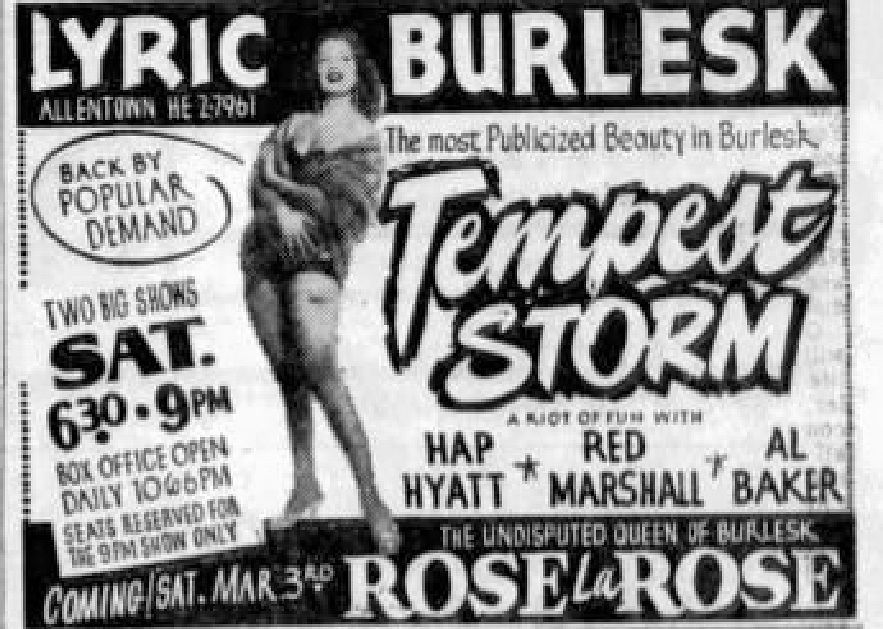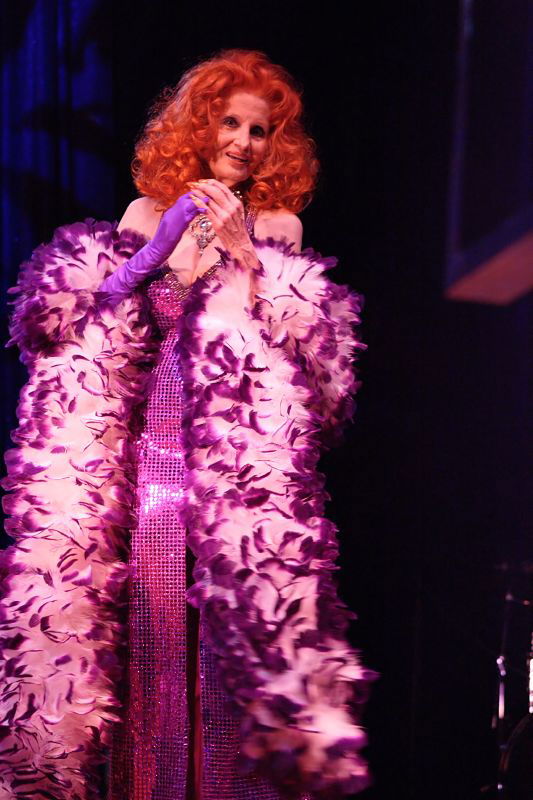Tempest Storm was not just a performer. She was a revolution wrapped in glamour, confidence, and fire. Her name alone promised passion and spectacle, and she always delivered. For over eight decades, she redefined burlesque, bringing elegance and artistry to a form often misunderstood. She was more than a showgirl. She was a symbol of strength, ambition, and timeless allure.
Behind the feathers, sequins, and dazzling lights was a woman who rose from poverty and pain to become the undisputed Queen of Burlesque. Her story is one of transformation, courage, and resilience.
From Annie to Tempest Storm

Tempest Storm ruled the stage for more than 60 years, but her beginnings were far from glamorous. Born Annie Blanche Banks on February 29, 1928, in Eastman, Georgia, she grew up in a small farming community marked by hardship and segregation. Life was not kind to her early on. Poverty and abuse shaped her childhood, and by the age of 14, she had already run away from home seeking freedom.
To escape her difficult past, she took a job as a waitress in Columbus, Georgia. Desperate for independence, she married a U.S. Marine to legally free herself from her parents’ control. The marriage was annulled just one day later. A year after that, she married again, this time to a shoe salesman whose sister worked with her at a hosiery mill. But her dreams were already too big for small-town life.
In a 1968 interview with Roger Ebert, she remembered the moment she decided to leave everything behind. “I just left one day. I still had it in my mind to go to Hollywood. I couldn’t get it out of my system,” she said. That drive would define her future.
By her late teens, she made it to Los Angeles, chasing the dream of becoming a star. One day, a casting agent suggested she change her name. That suggestion would mark the start of a new identity. “I asked her if she had any suggestions,” Tempest recalled. “She said, what about Tempest Storm? I asked her if she had any other ideas. She said, what about Sunny Day? I said, well, I guess it might as well be Tempest Storm.” That moment changed everything. Annie Blanche Banks became Tempest Storm — a name that would echo through history.
While working as a cocktail waitress, she caught the attention of a customer who asked if she could perform a striptease. She had never heard of it before. “I said, ‘What is that?’ I was from a small town. I didn’t know,” she told The Quad-City Times in 2013. “He said it was just dancing, but you take your clothes off. I said: ‘Oh no, not me. My mother would disown me.’”
Yet fate had already chosen her path.
In the late 1940s, Tempest Storm took her first steps onto the burlesque stage, and audiences were instantly captivated. Her performances weren’t cheap or vulgar. They were elegant, theatrical, and mesmerizing. Every move was deliberate, every look filled with confidence and allure. She turned the art of undressing into storytelling.
“I was more respectable then,” she once said in a 1973 interview. “You had to wear net panties and a net bra plus jeweled pasties. You couldn’t wear a G-string.” She knew how to suggest without revealing too much, creating mystery that kept her audiences enchanted.
By the mid-1950s, she had become one of the most successful entertainers in the country. Reports claimed she earned $100,000 a year — the equivalent of nearly $950,000 today. Her fame grew to legendary levels. Lloyds of London even insured her breasts for one million dollars, a publicity stunt that made global headlines. Magazines dubbed her “Tempest in a D-Cup” and “The Girl Who Goes 3-D Two Better.” The world couldn’t get enough of her.
She shared the stage with burlesque greats like Blaze Starr and Lili St. Cyr. She also appeared in iconic films such as Teaserama (1955) and Buxom Beautease (1956), where she performed alongside Bettie Page. These productions were daring for their time, walking the fine line between sensual art and censorship.
Her fiery red hair, commanding stage presence, and natural beauty made her unforgettable. Tempest Storm had become the face of burlesque and the woman who brought it to the mainstream.
Beyond the lights, Tempest Storm was known for her discipline and integrity. She refused to alter her body with plastic surgery, insisting that her natural looks were enough. She didn’t smoke, rarely drank, and maintained a clean lifestyle. Her mornings began with granola and fresh fruit, followed by relaxation routines that included massages and sauna sessions. Her health and beauty were part of her art.
Her fame often drew massive crowds. One of the most memorable examples came in 1955 when she visited the University of Colorado. More than 1,500 students gathered to see her, and the excitement quickly spiraled out of control. “They must have been shut up for months without women,” she joked later. “They rushed me like a herd of cattle.” That wild moment proved her extraordinary popularity and the powerful effect she had on her audience.
Tempest Storm was more than an entertainer. She was a pioneer who redefined how women could express sensuality and confidence on stage. Her performances celebrated the female body as something powerful, not shameful. She inspired a generation of women to embrace their own beauty without apology.
Offstage, Tempest Storm’s personal life was as bold as her performances. She had romances that captured headlines, including connections with Elvis Presley, actor Mickey Rooney, and infamous gangster Mickey Cohen. But her most talked-about relationship was her marriage to jazz singer Herb Jeffries in 1959. Jeffries was known as Hollywood’s first Black singing cowboy, and their union challenged deep racial prejudices of the time.
The marriage was both beautiful and controversial. Together, they had a daughter, Patricia Ann Jeffries. Yet the world was not ready to accept them. In many parts of the United States, interracial marriage was still illegal. Her decision to marry Jeffries came with a heavy cost. According to The New York Times, the marriage broke racial taboos and caused her to lose professional opportunities. Suddenly, the photographers and reporters who once followed her everywhere stopped showing up.

Still, Tempest Storm never regretted her choices. She and Jeffries eventually divorced, but she always spoke kindly of him, saying they remained “closer than ever” even after separating. Her willingness to love fearlessly and publicly was as revolutionary as her performances.
Most entertainers fade with time. Tempest Storm only grew brighter. She continued performing into her 60s and even made appearances in her 80s. Age did not stop her from stepping on stage, dressed in dazzling costumes, radiating the same confidence that made her famous decades earlier.
In 1999, she returned to the stage at San Francisco’s O’Farrell Theatre to celebrate the venue’s 30th anniversary. The city’s mayor, Willie Brown, declared it “Tempest Storm Day” in her honor — a recognition few entertainers ever receive. She continued appearing at the annual Burlesque Hall of Fame Pageant, delighting fans and proving that glamour has no expiration date.
In 2016, her extraordinary life was documented in the film Tempest Storm, a touching tribute to her lasting impact on entertainment and culture. Even after retiring, she remained active in interviews and public appearances, often reflecting on her long career with gratitude and pride.
“I’ve had a wonderful life,” she once said. “I’ve met so many wonderful people. I don’t regret a thing.”
In her later years, Tempest Storm settled in Las Vegas, the city of lights and dreams; the perfect backdrop for a woman who had spent her life captivating audiences. When she passed away in 2021 at the age of 93, tributes poured in from around the world. Fans, fellow performers, and journalists remembered her as the woman who gave burlesque its heart and soul.
Her influence stretched far beyond the stage. She showed the world that sensuality and strength could coexist, and that a woman’s confidence doesn’t fade with age. She embodied empowerment long before it became a buzzword.
Modern burlesque artists like Dita Von Teese openly credit Tempest Storm as their inspiration. Her mix of grace, humor, and passion set a standard that performers still try to match today. She turned what many saw as scandalous into something artistic, elegant, and proud.
Even after her death, her name remains synonymous with allure and independence. She didn’t just change the industry; she helped redefine how society viewed beauty and female power. Her story continues to remind women that reinvention is always possible and that confidence is ageless.
Tempest Storm was everything her name suggested: powerful, passionate, and impossible to ignore. From a small-town girl in Georgia to an international star, her journey was filled with challenges, triumphs, and an unshakable spirit. She transformed burlesque into an art form that celebrated both fantasy and authenticity.
She once said, “I feel most alive under the spotlight.” That light never truly went out. Her legacy lives on in every performer who dares to sparkle, every woman who chooses confidence over conformity, and every artist who turns struggle into art.
Tempest Storm wasn’t just unforgettable; she was unstoppable. And she will forever be remembered as the fierce red-haired queen who changed burlesque forever.
